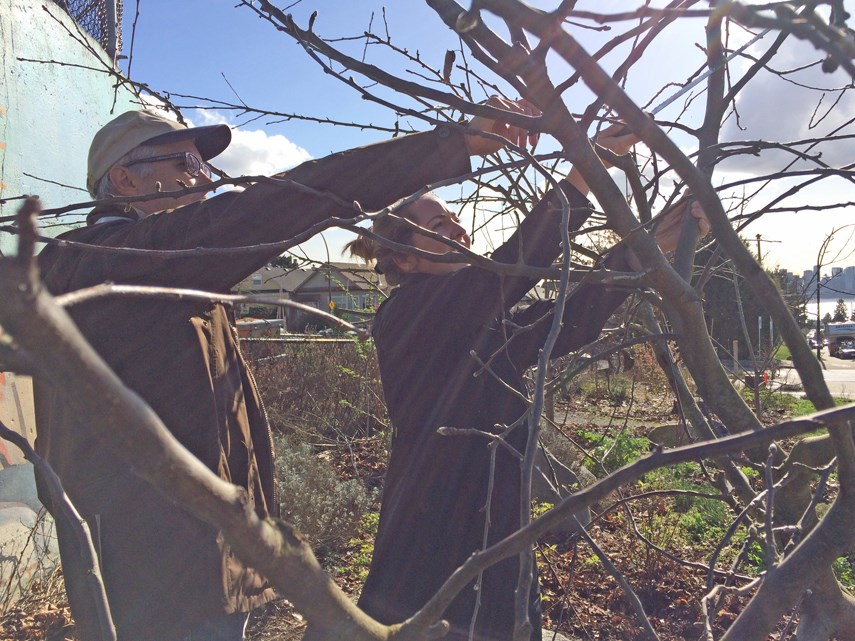We survived a major dump of snow at Enderberry Farm this weekend, and luckily our hoop houses (unheated plastic greenhouses) are still standing.
A lot of snow has been cleared off their roofs the last few days, and I think we’re in the clear at this point.
I think the same weather system hit Vancouver and the Island, but you got rain instead of snow. Pretty typical weather for this time of year, but as we approach February I always get excited for two reasons: by mid-month we’ll be back at 10 hours of daylight (the minimum needed for plant growth), and February always seems to bring a week or two of much needed sunshine.
Sometimes if we’re lucky the magnolias in Vancouver start to bloom in February, which makes me very happy! Let’s keep our fingers crossed that a few sunny days will appear in the weather forecast in February.
You will need these days to prune your fruit trees and vines while they are still dormant. The sunny days make it more pleasant to do this work, but also help prevent the spread of diseases that thrive in rainy wet conditions and freshly cut wood. Get your pruning tools sharpened now, so you can make nice clean cuts.
Have a small container of rubbing alcohol available to dip your tools into in order to sterilize them while you’re working in the garden. Some people sterilize tools after every cut and others only after cutting obviously diseased wood, but I prefer to do it after I’ve completed a tree and before I move on to the next one.
I know that I’m not patient enough to sterilize a tool after every cut, but at least this way I know I’m not spreading diseases between trees.
If you have a very overgrown fruit tree it can take years to bring it back to a productive state because you shouldn’t remove more than 30 per cent of the branches during your dormant pruning.
As an inexperienced novice “orchardist” I’ve tried to bring an old tree back into production, and if I had to do it again I would hire a fruit tree expert to do an initial pruning and help set a plan that I could implement over the following few years.
If you’re working with a young or a well-maintained tree, then the prospect of dormant pruning is much simpler. Always start pruning by removing the three D’s: dead, diseased, and damaged.
After I’ve taken care of the three D’s I move on to removing the watersprouts. These are small branches sticking straight up into the air off established branches.
Remove any branches that cross over other branches, or grow towards the centre of the tree. The goal is to have a tree that has evenly spaced branches that splay out from the trunk and catch as much light as possible.
Leaves are catching sunlight to turn into energy for the tree to grow and produce fruit. Pruning becomes a fine balance between removing enough branches to maximize how much light all the leaves on the tree are exposed to, and not removing so many that you reduce the amount of energy the tree can make.
Frequently step back from your tree and carefully consider the cuts you are making and the result that they will have on the whole. Are there areas where many branches are bunched up? This may be a good area to thin out by taking out a branch.
Make sure that all of your cuts are clean (no tearing!) and flush to the branch/trunk.
Don't forget that February also means it is Seedy Saturday season! The Vancouver Seedy Saturday is on Feb. 24 at VanDusen Botanical Garden.
The North Shore Seedy Saturday hosted by the North Shore Neighbourhood House’s Edible Garden Project is on March 3 from 10 a.m. to 1 p.m. at Lonsdale Quay.
Happy gardening!



